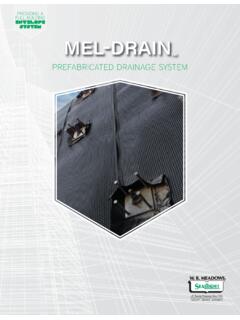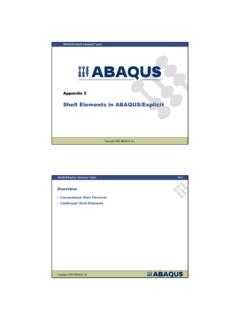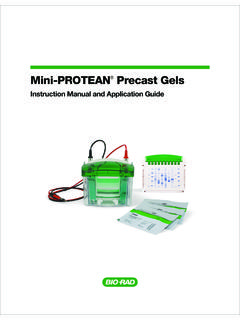Transcription of Viral Replication: Basic Concepts - Columbia University
1 1 Viral ReplicationScott M. Hammer, Replication: Basic Concepts Viruses are obligate intracellular parasites Viruses carry their genome (RNA or DNA) and sometimes functional proteins required for early steps in replication cycle Viruses depend on host cell machinery to complete replication cycle and must commandeer that machinery to successfully replicate2 Viral Replication: Basic Concepts Replication cycle produces-Functional RNA s and proteins-Genomic RNA or DNA and structural proteins 100 s-1,000 s new particles produced by each cycle-Referred to as burst size-Many are defective-End of eclipse phase Replication may be cytolytic or non-cytolyticSteps in Viral Replication.
2 Attachment(First Step) Surface protein on virus attaches to specific receptor(s) on cell surface-May be specialized proteins with limited tissue distribution or more widely distributed-Virus specific receptor is necessary but not sufficient for viruses to infect cells and complete replicative cycle3 Selected Virus ReceptorsAdenovirusCoxsackievirusEchovir usEpstein-Barr VirusHIV-1 Measles virusParvovirusPoliovirusRhinovirusCARCA R, CD55 Integrin VLA-2, CD55CD21CD4, CCR5, CXCR4CD46 Erythrocyte P AgPVRICAM-1 Steps in Viral Replication: Penetration(Second Step) Enveloped viruses penetrate cells through fusion of Viral envelope with host cell membrane -May or may not involve receptor mediated endocytosis Non enveloped viruses penetrate by-Receptor mediated endocytosis-Translocation of the virion across the host cell membrane4 Influenza Virus Replication CycleFrom Fields VirologySteps in Viral Replication: Uncoating(Third Step) Makes Viral nucleic acid available for transcription to permit multiplication to proceed Mechanism variably understood depending upon the virus5 Uncoating of Influenza VirusFrom Fields VirologyEndosomeSteps in Viral Replication.
3 Basic Strategies of Transcription and Translation(Fourth and Fifth Steps) (+) RNA Proteins (-) RNA (+) RNA Proteins RNA DNA RNA Proteins DNA RNA Proteins6 Steps in Viral Replication: Assembly and Release (Sixth and Seventh Steps) Process involves bringing together newly formed genomic nucleic acid and structural proteins to form the nucleocapsid of the virus Nonenveloped viruses exhibit full maturation in the cytoplasm or nucleus with disintegration of cellSteps in Viral Replication: Assembly and Release (Sixth and Seventh Steps) Many enveloped viruses exhibit full maturation as the virion exits the cell- Viral proteins are inserted into the host cell membrane -Nucleocapsids bind to these regions and bud into the extracellular space-Further cleavage and maturation of proteins may occur after Viral extrusion-Cytolytic activity of these viruses varies7 Influenza VirusFrom Fields VirologyRetrovirusesFrom Fields Virology8 Steps in Viral Replication.
4 Assembly and Release (Sixth and Seventh Steps) Herpesviruses (enveloped) assemble nucleocapsids in the nuclei of infected cells and mature at the inner lamella of the nuclear membrane -Virions accumulate in this space, in the ER and in vesicles-Virion release is associated with cytolysisHerpes Simplex VirusFrom Fields Virology9 Schematic of Replication Cycle of (+) RNA Single Strand Viruses Coding for One Sized RNAG enomic RNA binds toribosomes and is translatedinto polyproteinPolyprotein is cleavedGenomic RNA s serve as templates for synthesis ofcomplementary full length(-) RNA s by Viral polymerase(-) strand RNA serves astemplate for (+) strand RNA s;these serve to produce morepolyprotein, more (-) strand RNA s or become part of newvirionsFrom Fields VirologySchematic of Replication Cycle of (+) RNA Single Strand Viruses Coding for Genomic and Subgenomic RNA sGenomic RNA binds toribosomes but only a portionof 5 end is translated into non-structural proteins(-) strand RNA is classes of (+) RNA sare produced.
5 One is trans-lated into a polyprotein whichis cleaved to form structuralproteins. Another is full lengthand serves as genomic RNA for new virionsFrom Fields Virology10 Schematic of Nonsegmented (-) RNA Strand Virus Replication CycleTranscription of (-) strand occursafter entry and mediated by virionpackaged transcriptase(+) strand RNA s produced; proteinssynthesizedFull length (-) strand RNA sproduced and packaged into newvirionsTranscription and translation takeplace entirely in cytoplasmFrom Fields VirologySchematic of Segmented (-) RNA Strand Virus Replication CyclemRNA s are synthesized fromeach segmentViral proteins are synthesized(+) strand RNA s are synthesizedand serve as templates for(-) strand genomic RNA sFrom Fields Virology11 Schematic of Herpesvirus Replication Cycle(DS DNA Virus Which Replicates in Nucleus)
6 Sequential, orderedrounds of mRNA andprotein productionregulate replicationStructural proteins produced during lastcycle of replicationFrom Fields VirologyHIV-1 Virion12 HIV LifeCycleHIV EntryFusionCompleteCD4 AttachmentHR1-HR2interactionCXCR4 CCR5 HIVHIVgp120 AnchorageCD4Co-receptorinteractionCellHI VHIVHIVgp41gp4113 Primary HIV Infection:Pathogenetic Steps Virus dendritic cell interaction-Infection is typically with R5 (M-tropic) strains-Importance of DC-SIGN Delivery of virus to lymph nodes Active replication in lymphoid tissue High levels of viremia and dissemination Downregulation of virus replication by immune response Viral set point reached after approximately 6 monthsPHI: Early Seeding of Lymphoid TissueSchacker T et al: J Infect Dis 2000.
7 181:354-35714 Primary HIV Infection:Clinical Characteristics 50-90% of infections are symptomatic Symptoms generally occur 5-30 days after exposure Symptoms and signs-Fever, fatigue, myalgias, arthralgias, headache, nausea, vomiting, diarrhea-Adenopathy, pharyngitis, rash, weight loss, mucocutaneous ulcerations, aseptic meningitis, occas. oral/vaginal candidiasis-Leukopenia, thrombocytopenia, elevated liver enzymes Median duration of symptoms: 14 daysThe Variable Course of HIV-1 InfectionTypical ProgressorRapid ProgressorViral ReplicationCD4 LevelmonthsyearsPrimary HIVI nfectionClinical LatencyAIDSAV iral ReplicationCD4 LevelmonthsyearsPrimary HIVI nfectionAIDSBV iral ReplicationCD4 LevelmonthsyearsPrimary HIVI nfectionClinical LatencyCNonprogressor?
8 Reprinted with permission from Haynes. In: DeVita et al, eds. AIDS: Etiology, Treatment and ed. Lippincott-Raven Publishers; 1997:89-99. 15 Primary HIV Infection: Determinants of Outcome Severity of symptoms Viral strain-SI (X4) vs. NSI (R5) viruses Immune response-CTL response-Non-CTL CD8 responses-Humoral responses? Viral set point at 6-24 months post-infection Other host factors-Chemokine receptor and HLA genotype Gender and differences in Viral diversity? Antiviral therapy-Near vs. long-term benefit?Natural History of Untreated HIV-1 InfectionTime in YearsInfectionCD4 Cells10008006004002000 Early Opportunistic InfectionsLate Opportunistic Infections+123456789101112131416 RNARNAR everseReversetranscriptasetranscriptaseP roteaseProteaseDNADNAN ucleusNucleusProtease inhibitorsProtease inhibitorsReverse transcriptase inhibitorsReverse transcriptase inhibitorsAntiviral Agents for HIVA ntiviral Agents for HIVA ntiviral Agents for HIVE
9 NtryEntryInhibitorsInhibitors----------- ---------------------------------------- ---------------------------------------- ---------------------------------------- ---------gp41gp120---------------------- ---------------------------------------- ---------------------------------------- ---------------------------------------- ---------------------------------------- ---------------------------------------- ---------------------------------------- ---------------------------------------- ---------------------------------------- ---------------------------------------- --------------------------------------Re ceptorBindingNative FormFusion peptideHR1HR2 FusionIntermediateT20------------------- ---------------------------------------- ---------------------------------------- ---------------------------------------- - Ensnared Transition State IntermediateConformationFusionBlockadeMe mbrane FusionCore StructureT1249 Mechanism of T20/T1249 Mediated Fusion InhibitionModified from Weissenhorn et al.
10 , Nature 387, 426-430 (1997) and Furuta et al., Nature structural biology 5, 276-279 (1998). ConformationX--------------------------- ---------------------------------------- ---------------------------------------- ---------------------------------Cell MembraneVirus Membra















